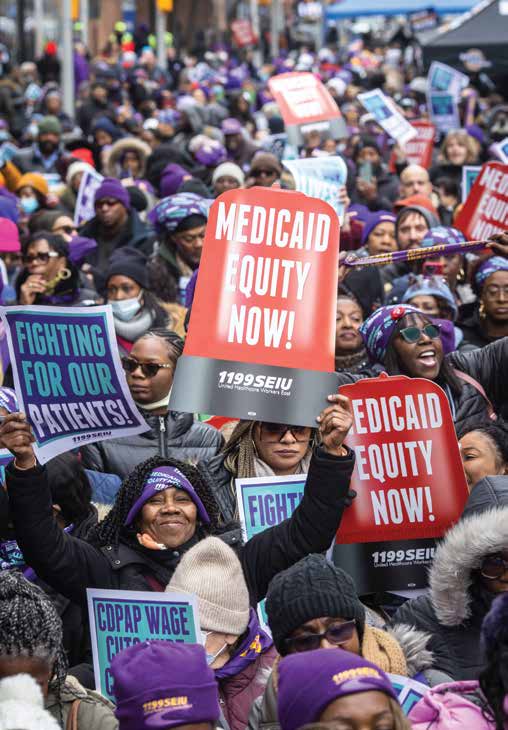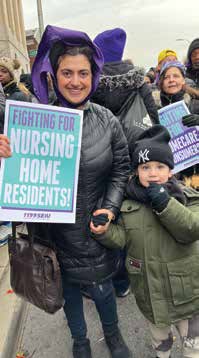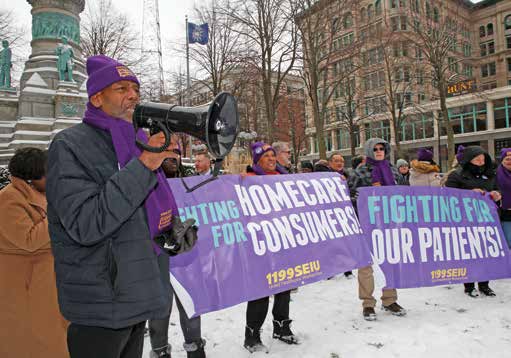The Fight for Healthcare
April 10, 2024
Members from all around New York State took to the streets to pressure Governor Hochul to protect the most vulnerable.

Regardless of the outcome of the budget negotiations in Albany, what is beyond any doubt is the commitment of 1199ers to protecting the well-being of their patients and their communities who rely on Medicaid funding for essential services.
On March 22, thousands of 1199ers filled the streets in seven major cities across New York State to protest Governor Kathy Hochul’s original budget proposal that failed to fully fund Medicaid, the public health insurance program that provides healthcare for more than seven million lowincome New Yorkers.
1199 healthcare workers from hospitals, nursing homes, home care, and communitybased settings joined Medicaid patients, faith leaders and elected representatives in demonstrations in Manhattan, Hempstead, Yonkers, Poughkeepsie, Syracuse, Rochester, and the Governor’s hometown of Buffalo.
The largest march took place on the streets of Manhattan, where a group of interfaith clerics delivered a petition to Governor Hochul’s New York City office signed by 627 faith leaders statewide calling for Medicaid tobe fully funded. The largest upstate rally took place near the Governor’s hometown in downtown Buffalo, where a large coalition of faith leaders, community organizations, labor unions and healthcare workers rallied and marched to Niagara Square.
Healthcare workers and advocates were calling on Governor Hochul to fix the current Medicaid funding levels, which compensate healthcare providers 30 percent less than the actual cost of care. This chronic underfunding has led hospitals and nursing homes to cut or reduce vital services, and in some cases, close their doors. Recent hospital closures include Mount Sinai Beth Israel in Manhattan, Eastern Niagara Hospital, and Kingsbrook Jewish Medicaid Center in Brooklyn. In January, the state announced plans to close SUNY Downstate. Community healthcare services are also being curtailed at an alarming rate—maternity wards, for example, have been closing at a rate of two per year, while some nursing homes were forced to close entire units.

She was joined on the Manhattan march by Jose Gozalez, who has worked at Beth Israel Hospital for 35 years. “Beth Israel is my family’s hospital. Both my daughters were born there, and sadly my father died there. Hospitals are all about life and death, but I didn’t think I would outlive Beth Israel Hospital. I’m marching all the way to the governor’s office so that New Yorkers do not lose another hospital.”

Shantina Heckman, an 1199 CNA at Loretto Health and Rehabilitation Center in Syracuse added: “Some facilities are already at bare bones and any more cuts might look like closing their doors. It’s very hard to recruit new workers in situations like this. Seniors in nursing homes are some of the most vulnerable people out there. What would happen to them if they didn’t have this place to live and people like me to care for them?”

